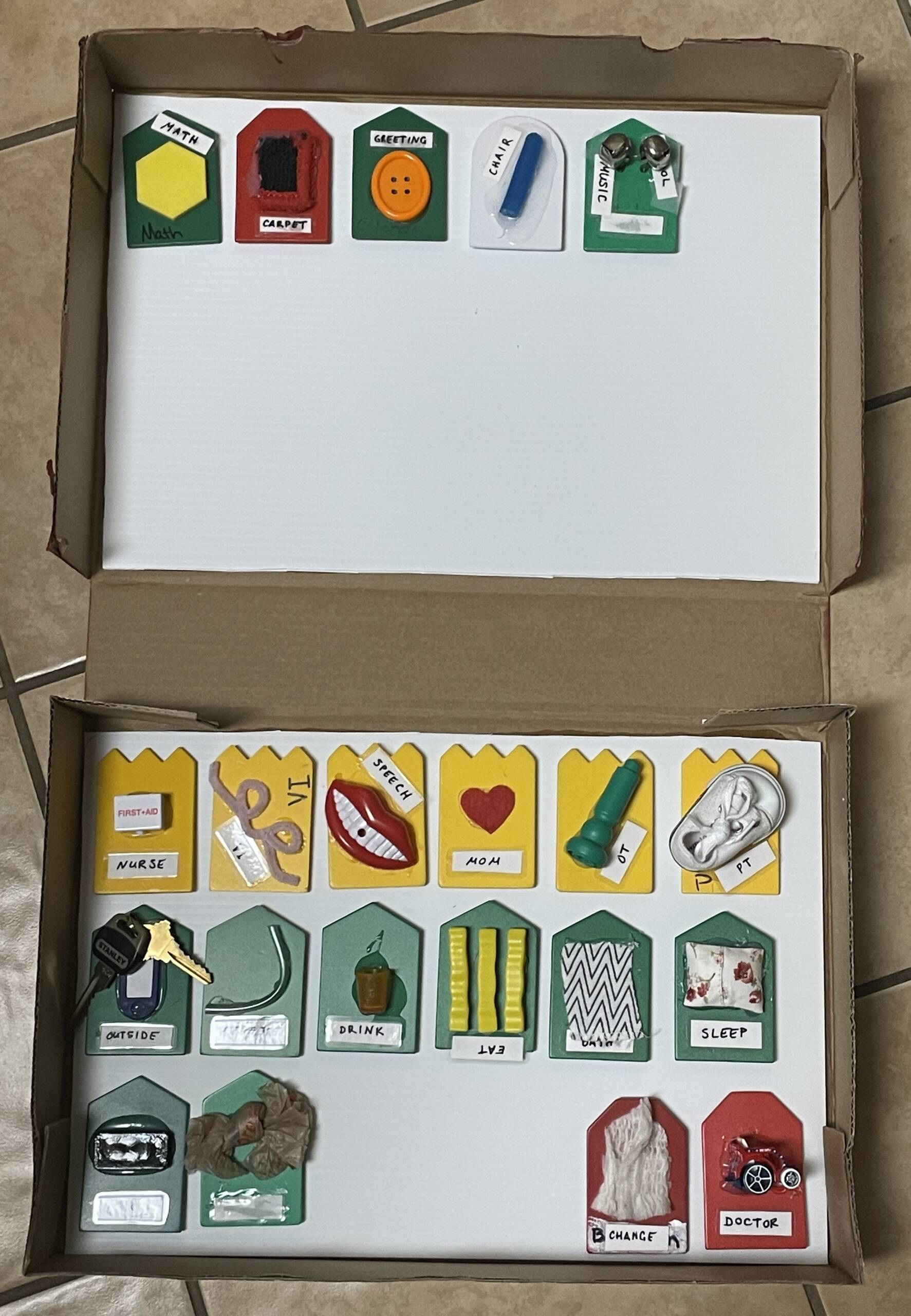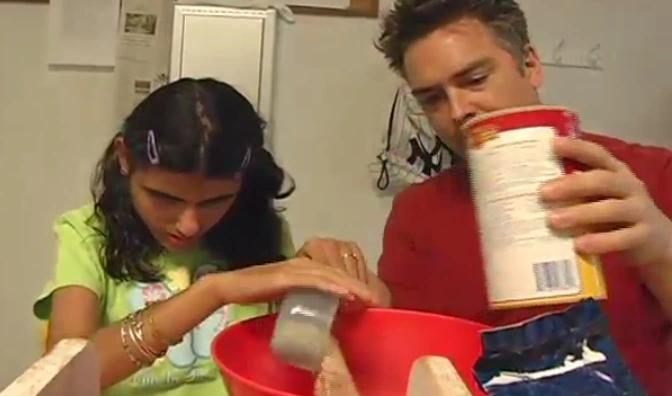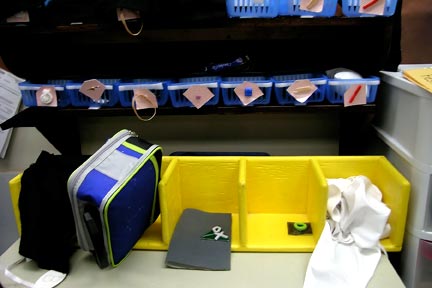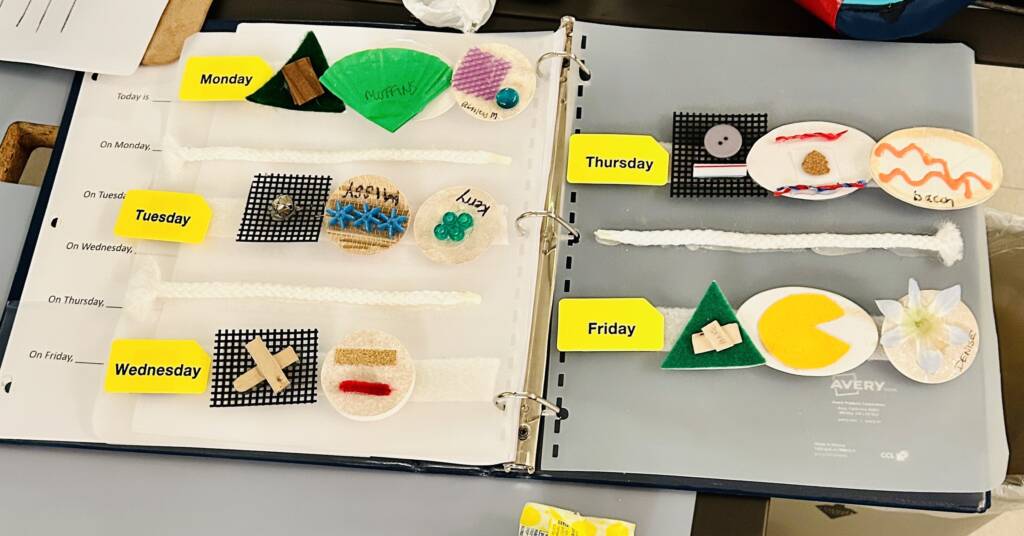Get the team together, and get ready to collaborate!
I work with a homebound student who is nonverbal and has complex access needs. During one lesson in the home, the team engaged in some amazing collaboration to support the student’s goals, and I couldn’t resist sharing it with you all. The parent, home health nurse, speech therapist, OT, and I discussed how to create a tactile schedule that could stay at home with the student. We began by sharing ideas of what we would want to include in the schedule for this student.
After we made the list, we discussed what the student would use to identify each item on our list. Using the APH Tactile Connections, we needed to decide what category of symbol our student perceived each item on the list…a person, activity, or a place. This collaboration was meaningful beyond words!
After we met as a team, I went home with the list and created the tactile cards for each of the items on the list. The speech therapist put the labels on each of the cards so anyone working with our student would know what each card was used to represent. At this point, we discovered that we had a problem that we needed to find a solution for.
What would be the best way to use the cards?
In classrooms where students are using schedules like this, you commonly see them on Velcro strips, either on the wall or on the student’s desk. This student receives instruction at home. We needed to be mindful of any space limitations and the functionality for using the schedule in this environment.
My supervisor is a campus support coordinator, and I sought her out to help me problem-solve and generate ideas. She suggested I use the box her king cakes were mailed to her in. The box was perfect! I decided to paint over the decorations on the box to make it easier to see, and I was able to find a shade of brown that would work in my collection of crafty items at home. Once the box was painted and dry, I met with the speech therapist again to discuss whether I should orient the box in portrait or landscape. While we discussed this, and the pros and cons of each orientation, she shared that she felt the box needed more stability. She felt that the integrity of the box might deteriorate over time, so we decided the box should be in landscape with the Velcro strip placed at the bottom. This way, as the student progresses in their ability, additional rows can be added. We can work on teaching the student working from top to bottom and left to right, as a child would learn to read.
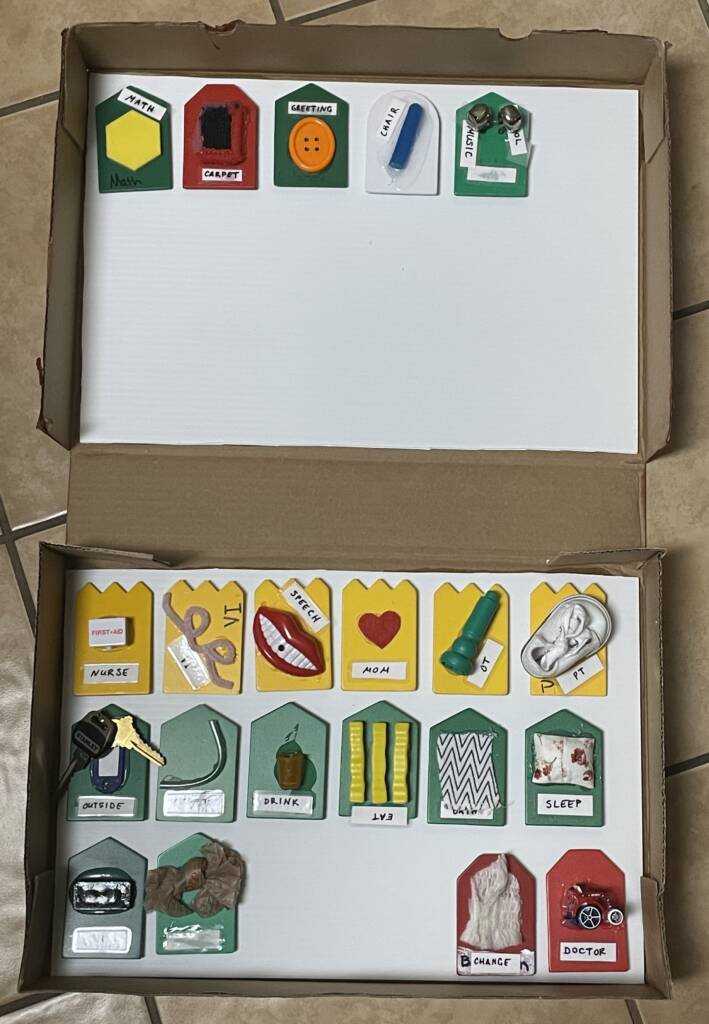
After that, assembly was fairly easy. I used the top row of the lid storage for school related items. The top row of the bottom storage was for the people in the student’s life. The next two lines were for the items mom and the home health nurse had asked for.
To stabilize the box, I rummaged around my garage and I decided to use a school bond sign that I picked up in my neighborhood after the election. I use the signs frequently for the materials I make for my students. After cutting it to size, I used Gorilla Glue to secure the pieces inside the bottom and top of the box. I used tent weights to hold it in place while it dried.

At this point, I realized I had another issue to resolve. Opening and shutting the box can be distracting and waste precious time during a lesson. I decided to create a lesson plan card. The teacher can use the card to display all the items needed during the lesson.
The student can remove the completed item and put it in the “finished” bowl.

The teacher can add the next activity in the lesson on the top of the box on the Velcro strip. Once the student is ready for more items, they can be placed on the Velcro line.
The parent watched us as we used the new system with her child. Teaching the parent and the home health nurse was the last thing for us to do. The box has room to add more items as the student grows in their learning.
This collaboration proved that it truly takes a village. Great minds got together to create a system that is useful both for school lessons and in the home. Including the parent was key to this collaboration. Without her, I would never have thought of ‘doctor’ being a place and not a person, for example. She provided valuable insights we wouldn’t have known without her.
Learn more about tactile schedules


